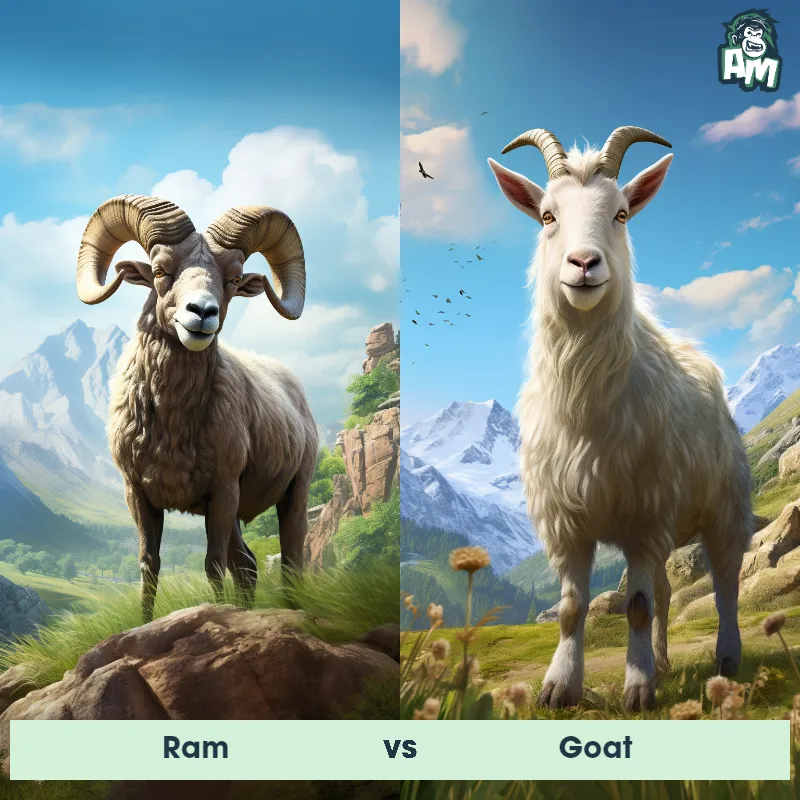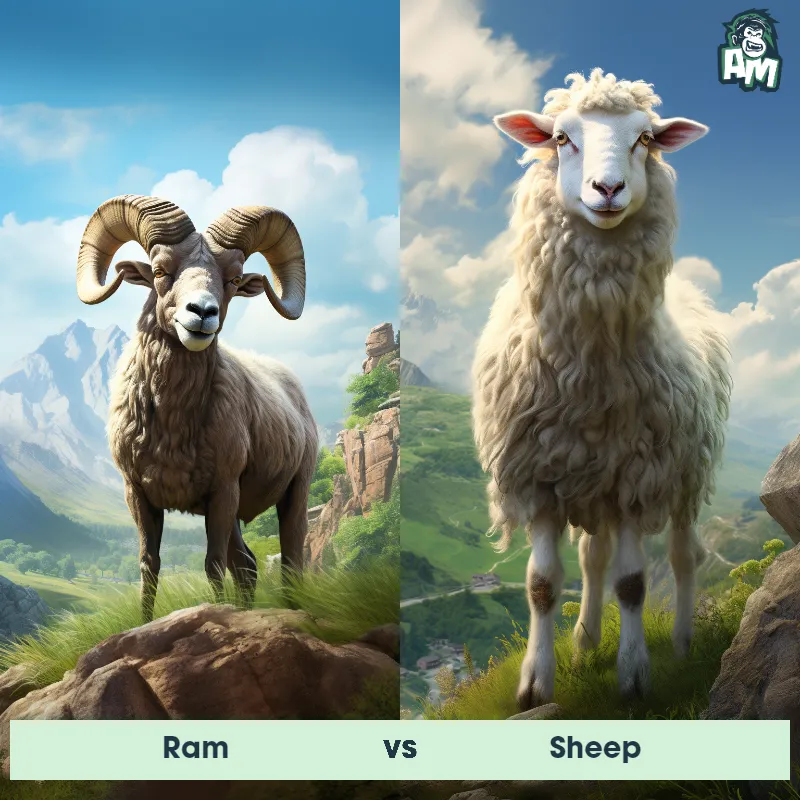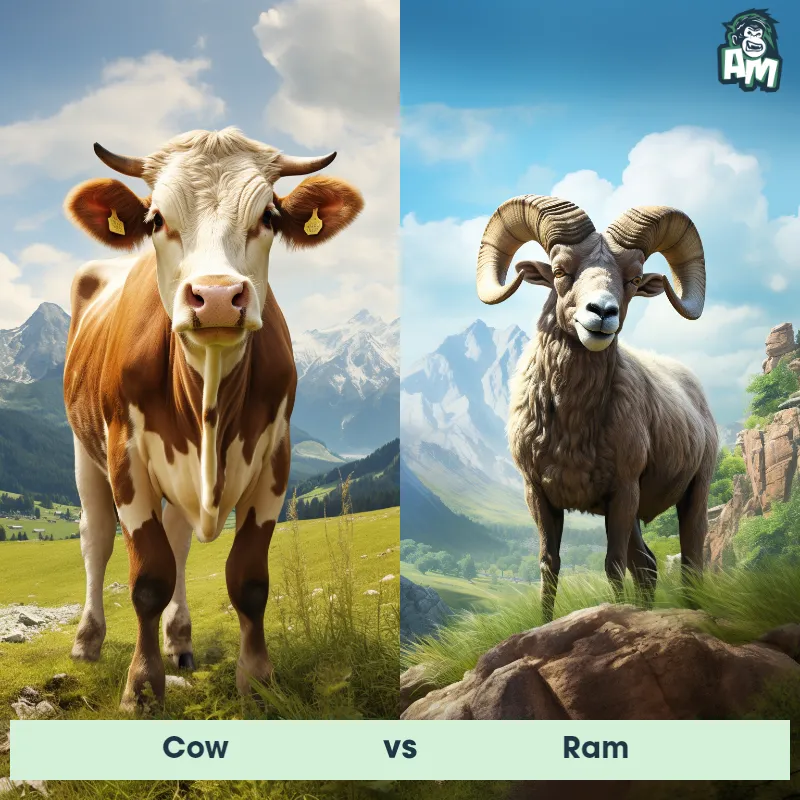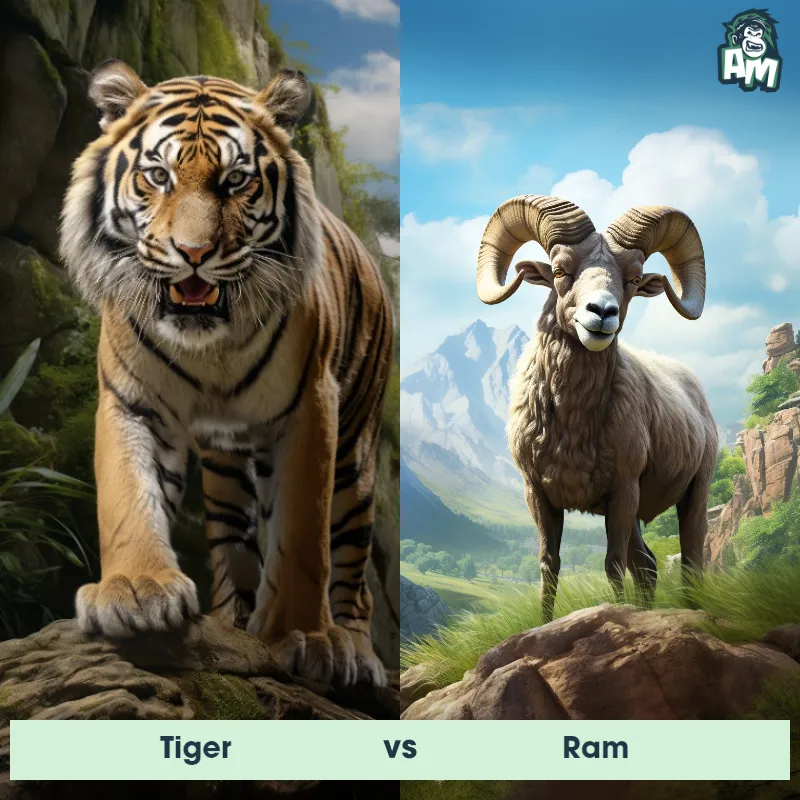The Ram
The Ram, also known as the domestic sheep, is a quadrupedal mammal widely bred for its wool and meat. It is characterized by its thick, woolly coat which varies in color from white, brown, and black, depending on the breed.

| Ram | |
|---|---|
| Size | 2.5-3 feet tall at the shoulder (0.75-0.9 meters) |
| Weight | 150-300 pounds (68-136 kilograms) |
| Speed | 99mph (159km/h) |
| Key Strength | Large, curling horns used for head-butting |
| Biggest Weakness | Limited agility due to heavy horns and robust body |
| Scientific Name | Ovis aries |
| Family | Bovidae |
| Habitat | Mountainous terrains, flat plains |
| Geography | Worldwide |
| Diet | Herbivore, primarily grasses |
| Lifespan | 10 years - 15 years |

The Ram
The Ram, also known as the domestic sheep, is a quadrupedal mammal widely bred for its wool and meat. It is characterized by its thick, woolly coat which varies in color from white, brown, and black, depending on the breed.
Fun Fact: Rams are known for their exceptional memory and recognition skills, being able to remember familiar sheep and humans for years.
| Ram | |
|---|---|
| Size | 2.5-3 feet tall at the shoulder (0.75-0.9 meters) |
| Weight | 150-300 pounds (68-136 kilograms) |
| Speed | 99mph (159km/h) |
| Key Strength | Large, curling horns used for head-butting |
| Biggest Weakness | Limited agility due to heavy horns and robust body |
| Scientific Name | Ovis aries |
| Family | Bovidae |
| Habitat | Mountainous terrains, flat plains |
| Geography | Worldwide |
| Diet | Herbivore, primarily grasses |
| Lifespan | 10 years - 15 years |
Ram Matchups
We use AI to simulate matchups between the Ram and other animals. Our simulation considers size, strength, and natural predatory behaviors to determine the most likely outcome.

Can't find the Matchup you want?
Create Your Own MatchupRam: Diet, Predators, Aggression, and Defensive Behaviors
What do Rams eat?
Rams are herbivores and primarily feed on grass, herbs, shrubs, and leaves. They have a selective diet and tend to graze on a variety of vegetation to meet their nutritional needs.
Do Rams have any predators?
Yes, Rams have several natural predators in the wild, including wolves, bears, mountain lions, and coyotes. These predators often target younger or weaker Rams as easy prey.
Are Rams aggressive?
Rams can be territorial and exhibit aggressive behavior, especially during the breeding season or when defending their herd from potential threats. They are known for their head-butting behavior, particularly among males.
Do Rams fight?
Yes, Rams are known to engage in physical fights, especially during mating season or to establish dominance within a herd. They use their horns as weapons during these confrontations.
How do Rams defend themselves?
Rams have thick skulls and a pair of curved horns that they use for defense against predators or rivals. They can also run at high speeds and maneuver in rocky terrain to escape threats.
What is the biggest weakness of Rams in a fight?
Despite their powerful horns and aggressive behavior, the biggest weakness of Rams in a fight is their lack of agility and vulnerability to being outnumbered by predators or stronger opponents. They rely heavily on their ability to head-butt and push adversaries with their horns, which can be exploited by more agile predators.
Fun Fact: Rams have an extraordinary jumping ability and are quite agile, with the ability to leap over fences and obstacles as high as 1.2 meters 4 feet.
Fun Fact: When confronted with danger or during fights with other males, rams exhibit an impressive behavior known as "ramming," wherein they charge towards their opponents and collide head-on, using their horns as weapons to establish dominance or defend their territory.
















